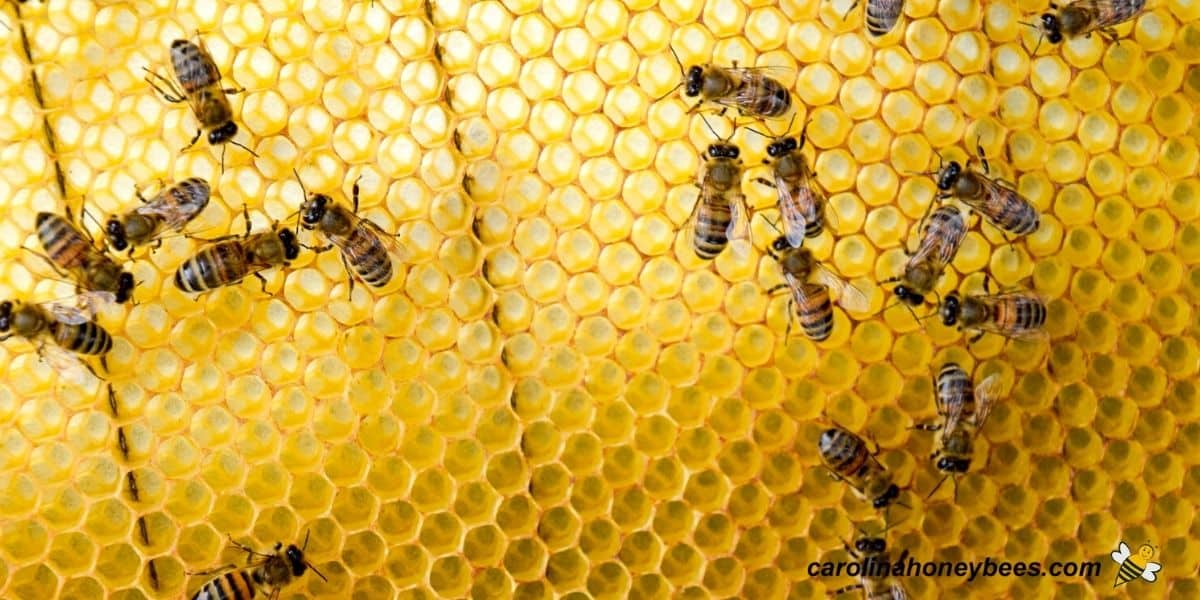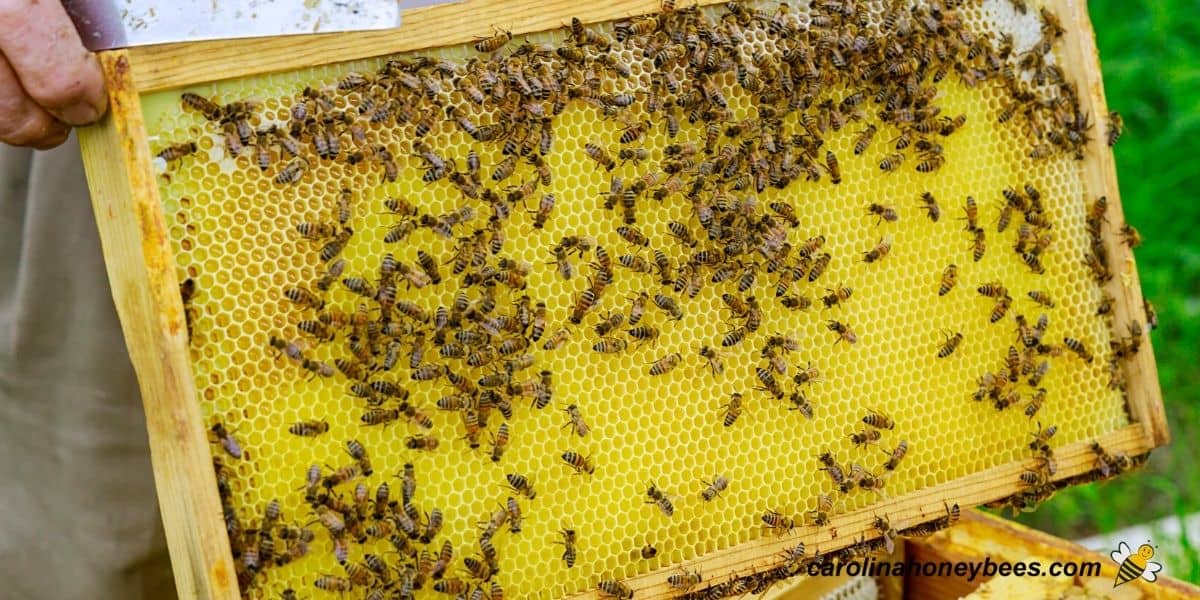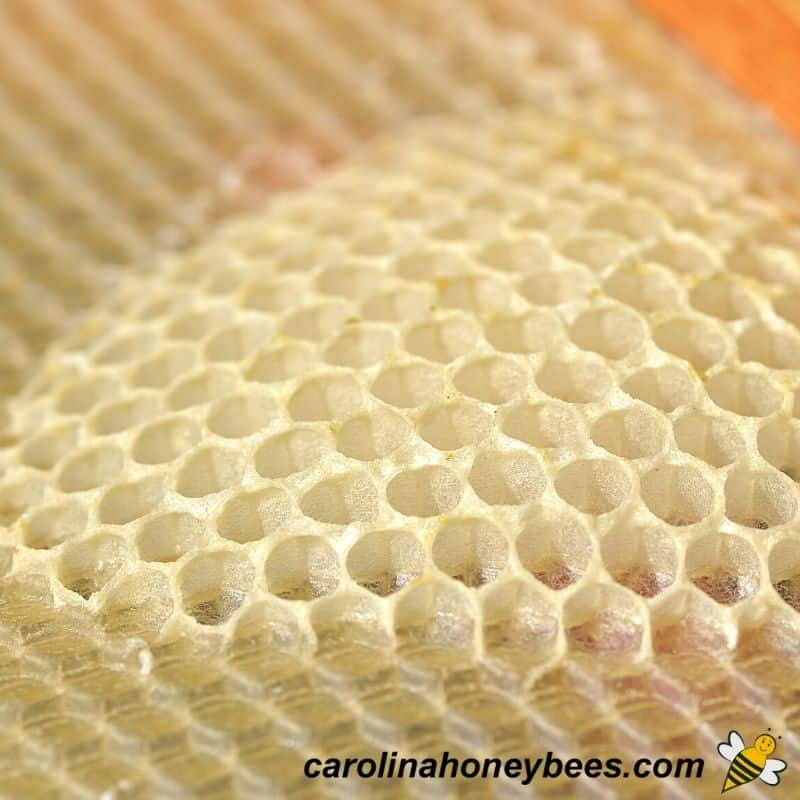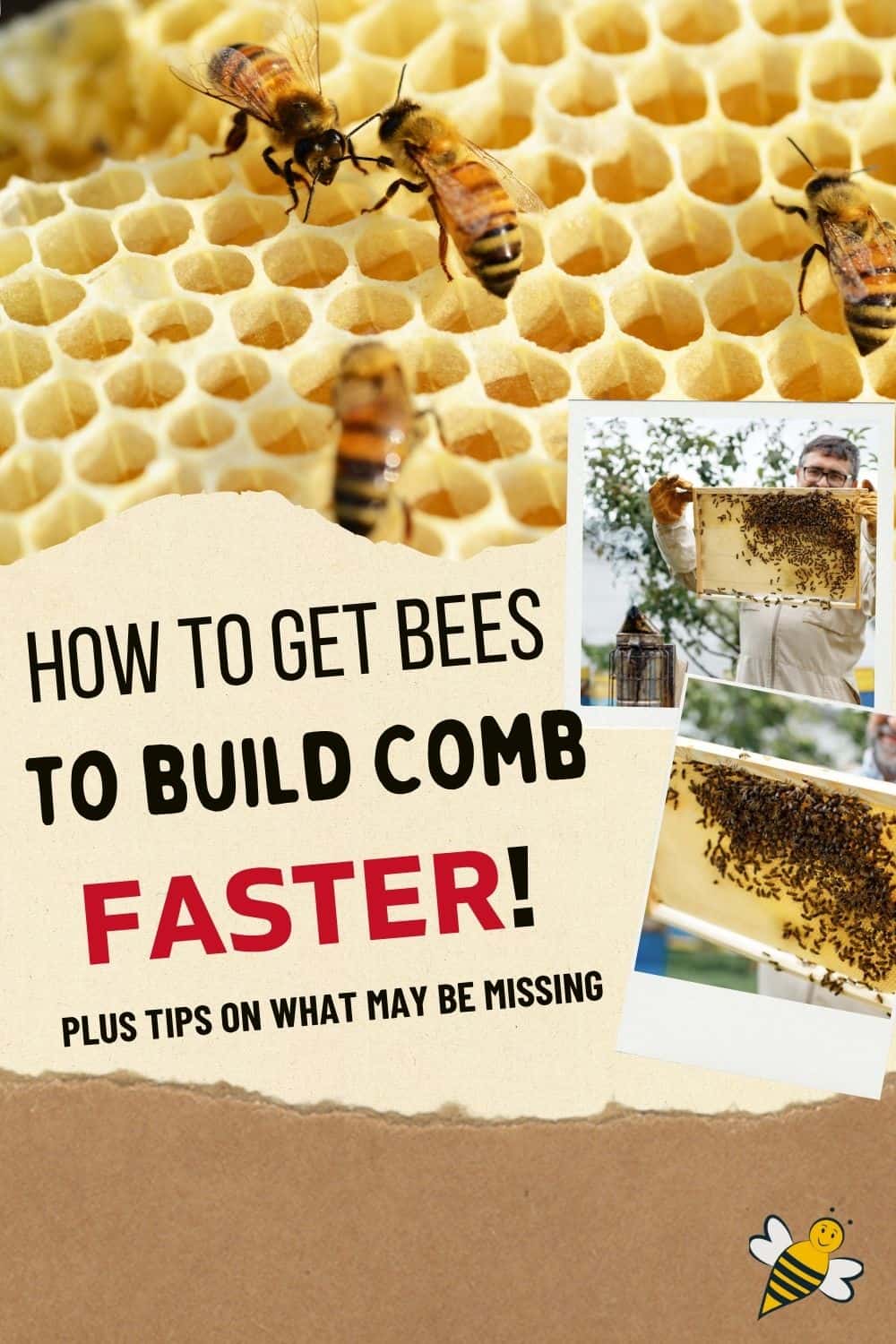Are Your Bees Slow to Build Comb?
Encouraging bees to build comb is an important goal for beekeepers. Fresh comb gives the queen new, clean places to lay eggs. It is especially important for new colonies that are in a race to establish the hive. The sooner comb is drawn, the sooner your bees can raise brood and produce honey. A lot of factors are involved in the rate of wax building for any colony. In the guide, you will learn some of the ways you can help – any why things may not be progressing.

Faster comb production sets the pace for a healthy productive hive. First, we need to understand the dynamics of how bees make wax into comb and the resources they need to do so.
Why Comb Building Is Essential—and When to Expect It
Comb building is one of the most important tasks in the colony. Every part of life in the hive depends on solid sheets of honeycomb cells.
Bees raise their brood (eggs, larvae, and pupae) in the hexagonal wax cells, store pollen as protein-rich “bee bread,” and preserve nectar until it ripens into honey.
Without comb, the colony simply cannot grow, store food, or survive long-term. Rapid comb building is especially important for new colonies that are starting with nothing.
When to Expect It
Interestingly, honey bees do not build comb at the same rate constantly. One of the major times when it is easy to get bees to draw comb is during Spring or early Summer. This is when plentiful nectar is abundant and temperatures are warm.
Making wax is a resource intensive task for the colony. Worker bees produce wax when they are well feed. That usually means a lot of nectar coming in from the field.
A “honey flow” or time of ample blooms and nectar is the ideal situation for the best comb building efforts.
But, there are several conditions that can slow comb building or even stop it all together. Our goal is to aid the new colony in overcoming these problems.
What Bees Need to Build Comb Fast
A healthy honey bee colony has a lot of work to do. When the conditions are favorable, they will get right to work on those sheets of foundation you gave them.
Strong Population of Workers
Worker bees produce wax from eight special glands- located on the under-side of their abdomens. These small bits of wax are clear at first and turn white as they harden.
Honey bees don’t have teeth but they use their mouth parts (or mandibles) to chew and shape each piece of wax. This requires thousands of workers to get the job done.
Young workers are the best wax producers. They hang in chains near the construction area – we call this bees festooning. And, even though we are not sure why it happens – it is really amazing to see.
Comb Space Must Be Needed
Honey bees are not lazy. But, they are not wasteful either. Drawing out comb requires a lot of effort and energy. If they do not need the space, you will have a hard time getting them to fill the frames.
This is why getting your bees to draw comb is more difficult as we head towards Winter and the incoming nectar sources are sparse. They do not see a need for more space to store food.
Comb Production Requires Heat
Honey bees need warm temperatures to work beeswax. An optimal 95° F (inside the hive) is good for molding beeswax scales to form comb.
If the outside temperatures are very cool or cold, it will be much more difficult for the bees to build comb. They even may not think the effort is worth it. Also, cold temperatures outside will mean that less food is being brought inside.
Also, having a large adult population help to generate heat and produce wax. Another example of why a strong colony will draw comb faster.

Proven Ways to Encourage Bees to Make Comb
We have to work with the natural tendencies of our bees. However, there are some things we can do to give our colonies the resources they need to make honeycomb faster.
1. Provide Supplemental Feed
We know that plant nectar (honey) is the very best food for bees. But often, new hives benefit greatly from supplemental feeding.
Feeding bees sugar water may help that new colony get off to a better start. Most beekeepers agree that incoming fresh nectar or 1:1 sugar water recipe (equal parts of cane sugar and water) encourages wax building.
This can be especially helpful to hive splits or smaller colonies – such as late season or Fall swarms, Extra feeding can tip the odds in their favor.
2. Maintain Strong Populations
The majority of the hive population is made up of female worker bees. Most of the honeycomb in your hive will be built by bees that are between 10 and 18 days old.
The best comb building colonies will have an abundance of these young workers. Of course, workers of any age can make beeswax. But the (foraging bees) will not be as good at it.
If you have more than one hive, move a couple of frames of capped brood to the new colony. As these workers emerge, they can help build out the comb.
Otherwise, make sure to keep well mated productive queens in your colonies. A good egg laying rate can help bolster hive population.
3. Provide Space When Needed
It can be challenging to know when to add another super box to a hive. You do not want to give them too much space – but they do need room to expand.
When the weather is warm, colonies are strong and nectar is coming in. Add more hive boxes as needed.
4. Keep the Colony Healthy
As with any livestock, health is important for maximum production. Healthy bees will draw comb faster and be more productive in every way than sick ones.
Perform routine hive inspections, watch for pest problems and monitor varroa mite levels in all of your hives during the season.

Expert Tips
Ok, let’s say your colony populations are good and strong and you have nectar coming in (or you are feeding). And you bees are still not making comb like you want – what to do?
- consider the time of year
- baiting bees up to new box
- use swarms
- be patient
Chose the Optimal Time of Year
Getting your bees to draw out foundation (or build comb) will be easier in the Spring. Try to use your frames of foundation early in the year and save a couple of drawn out frames for later emergencies.
In my experience it is much more difficult to encourage honey bees to build comb after the first of July. If I need frames built out, I push to get that done before mid-Summer.
Baiting Bees Up
If a colony seems reluctant to move up into a new box of foundation, you may try “baiting up”. Take a frame of full honeycomb from the bees’ super and exchange it with a frame of new foundation in the new box.
This can encourage the bees to move up into the next box. No harm in doing this.
However, keep in mind, if you performed mite treatments with that frame in the hive – you may not want to consume the honey (depending on the treatment used). Beekeepers that use this method should go back in a few weeks and switch them back.

Use Swarms to Produce Comb
If you catch a honey bee swarm, the workers in the swarm are ready to build comb for their new home. They leave the hive with wax glands primed and ready to go!
Once swarms get started drawing comb they will often continue as long as you feed them. This may be an opportunity to get a few extra frames drawn out for later use.
Be Patient
Sometimes we beekeepers think our colonies should be building comb when they seem reluctant to do so. At times, a colony will build comb very fast. Other times, it seems to take forever.
Sometimes, we can help nature along but you can’t force it. When your colonies have the conditions and resources they need – the bees will build the comb needed.

Significance of Drawn Comb
Consider your beekeeping terminology – in reference to a word that causes some confusion among novice beekeepers – “drawn comb” – “pulled comb” or “drawn-out comb”. Do not confuse this word with “drone bee” (male bees).
What is drawn comb? This term is used to describe the sheets of honeycomb found inside a beehive. Usually within removeable frames.
Drawn comb is valuable both to the hive and the beekeeper. The first season’s work is especially challenging for new colonies that begin with nothing.
If you have a few frames of drawn-out comb to give them, it is a big bonus.
FAQs
A honey bee colony must have a good population of young bees, plentiful food (nectar – 1:1 sugar water) and a need for space for efficient comb construction. If any of these are lacking, your bees will be slow to build honeycomb.
A strong colony with plenty of food and young workers can drawn out a shallow super in a week to 10 days. But, it may take up to 2 months.
Yes, a colony without a queen will draw comb as long as the population and food resources are there. They may not need it for bee brood but they will still store honey.
Beekeepers can argue for days on end about queen excluders. Some beekeepers feel that using an excluder slows down comb construction. I will say that in all my years of keeping bees, I have only had 1 colony that did not want to go through the excluder.
Yes, bees will build honeycomb in empty frames but unless you use a small strip of foundation as a starter strip – they may not build it inside the frame as you wish.
Many beekeepers, brush a light coat of beeswax on plastic foundation prior to placing them in the hive. This practice along with a good feeding plan helps encourage comb drawing.
Final Thoughts
It is important to remember that we manage the bees but we do not control them. All of the needs of the colony must be met before we can expect them to perform at optimum levels. Colony differences exist too – some bees build wax faster than other. Give your bees what they need and hope they make enough wax for you to have some excess beeswax you can use.

